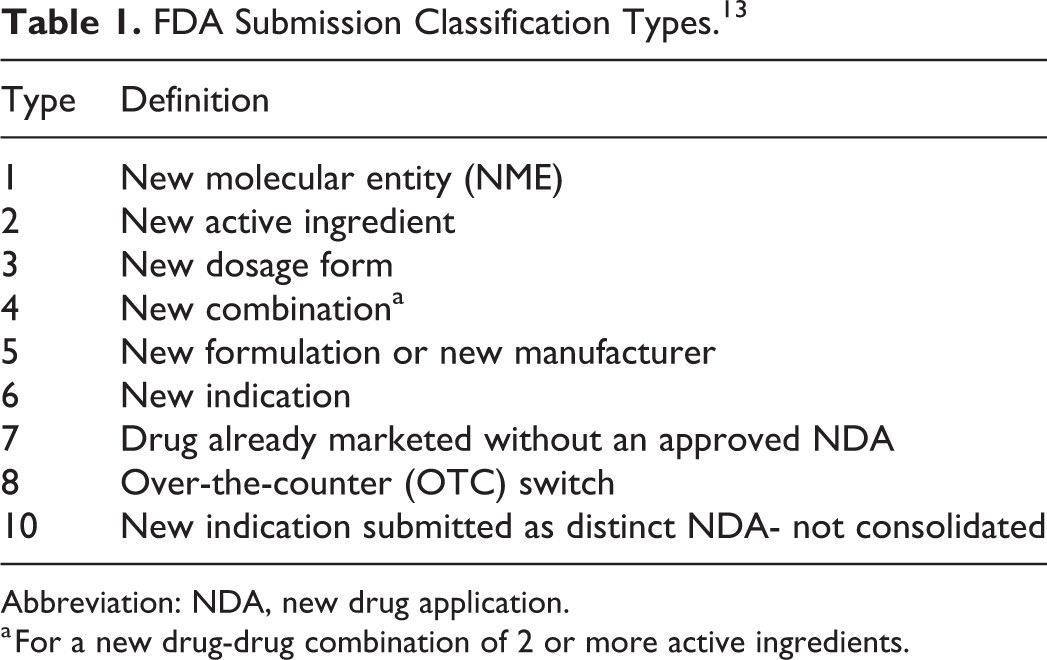This article not subject to U.S. Copyright. Published 2019 by the American Chemical Society.
Noel T. Southall
Abstract
We report our experience working with the US Food and Drug Administration (FDA) to obtain access to an abandoned investigational new drug (IND) application and subsequent application documents submitted by Hoffman-La Roche, Inc. to the agency. Contrary to others’ experience and in response to our specific request, FDA provided the IND application number and 464 pages of relevant material, including the initial pharmacology review by the agency and an annual report consisting of an investigational drug brochure, clinical study protocol and amendments and detailing clinical experience with drug treatment. It may be possible to bring application files of additional drugs previously submitted to the agency into the public record to help bolster repurposing efforts and realize our shared public interest in benefiting from previous human clinical studies.
The Freedom of Information Act provides for public access to US government agency records, except for those matters that are trade secrets and of commercial value.(1) FDA stipulates that data and information in an investigational new drug (IND) application are only disclosed consistent with applicable statutes and regulations.(2−4) In general, FDA will not confirm the existence of an investigational new drug application or provide public disclosure of an application’s data before the agency sends an approval letter granting marketing authorization. Unfortunately, the vast majority of investigational applications never achieve marketing approval. While knowledge of these adverse development experiences can be of commercial benefit for competing companies working on a related technology, there is also a potential public health benefit in publishing the results of these human clinical research experiences and an ethical duty to disclose all results from human experimentation.(5)
During a high-throughput screen for new therapies that might target acute myeloid leukemia (AML), we identified the benzodiazepine Ro 5-3335, which had been originally synthesized and patented by Hoffman-La Roche, Inc.(6) We noted that a related compound, Ro 24-7429, had been further developed by the company and had entered clinical trials for an indication unrelated to AML.(7) We wanted to know whether the previous clinical experience with Ro 24-7429, particularly its safety profile, would support repurposing it as a leukemia treatment and possibly even accelerate our potential clinical development.
Hoffman-La Roche originally developed the benzodiazepine Ro 24-7429 as a therapy for human immunodeficiency virus infection. We believed that that the data previously submitted to the agency are no longer of commercial interest to the company, and so public disclosure of the materials submitted under their IND application would cause no private harm. The data generated during these endeavors is over 20 years old and we note that while the chemical matter of Ro 24-7429 is claimed in United States Patents 3,405,122 (Oct 8, 1968) and 5,141,735 (Aug 25, 1992), any patent protection afforded by these claims has long since expired.(8,9) Moreover this line of investigation, specifically benzodiazepine tat-dependent replication inhibitors as treatments of HIV infection, appears to be extinct in the field. The sponsor itself has previously stated, “RO 24-7429 just didn’t fit into the corporate strategy··· Roche decided that any company choosing to pursue RO 24-7429 would be able to use the data developed in the trial, and additional toxicity data might make it easier to find a licensee,” publicly indicating the existence of a clinical development program for Ro 24-7429 in the United States as well as a lack of commercial interest in the continued development of that program.(10)
We sought electronic or paper copies as available of the following records under the Freedom of Information Act: the sponsor-initiated IND application for F. Hoffmann-La Roche Ltd.’s medical product for the treatment of HIV infection containing 7-chloro-N-methyl-5-(1H-pyrrol-2-yl)-3H-1,4-benzodiazepin-2-amine also known as Ro 24-7429 dated sometime before July 1991, especially experimental methods and results for animal pharmacology and toxicology studies including formulation of compound for study in vivo and any adverse compounds effects in vivo, chemistry and manufacturing information including any characterization of composition of material used for clinical studies, clinical protocols initiated under this IND and any adverse outcomes observed, and the Investigator’s Brochure for Ro 24-7429.
This request was specific to Hoffmann-La Roche’s medical product for the treatment of HIV infection containing 7-chloro-N-methyl-5-(1H-pyrrol-2-yl)-3H-1,4-benzodiazepin-2-amine also known as Ro 24-7429. The request of FDA was made in context of an NIH program, Therapeutics for Rare and Neglected Diseases, tasked with the development of agents substantially similar or related to Ro 24-7429. We were aware of the fees relevant to FOIA requests and had funds available to be used to pay for this specific FOIA request. The request was submitted in writing to the Division of Freedom of Information at the FDA.
We initially sought these records directly from the company. However, company staff expressed doubt in private communications with us that it would be possible to locate the relevant information within the companies’ archives given both the sensitivity of such commercial records and the age of the records. In contrast, FDA has standardized processes for the handling and long-term storage of these applications. The repository of application documents at FDA is probably the most valuable source of biomedical research in the world, covering a large majority of the world’s commercial and research clinical development efforts over the past decades.
In initial conversations with FDA Division of Freedom of Information, FDA staff made clear the distinction between a request for data on chemical and manufacturing controls and drug formulation as opposed to other data relevant to animal pharmacology, toxicology, adverse events, clinical study exclusion criteria, and additional elements of the Investigator’s Brochure. They explained that the barrier for releasing this chemistry information is higher than the safety and effectiveness data. Given advances in organic medicinal chemistry in the intervening decades as well as existing chemistry information available from patents and other literature, we narrowed the scope our request to this safety and effectiveness data.
Upon review of the files available in FDA’s records repository, we were offered a copy of three documents: first, the last annual report submitted by the sponsor; second, a copy of last updated, executed protocol; third, FDA pharmacology and toxicology reviews for the application (Figure 1). These reports were redacted for chemistry data out of scope with our narrowed request, as well as one case in which company information about other concurring programs under other INDs was included in the annual report. The resulting 464 photocopied pages were delivered to us on digital media. All of the materials disclosed can be found in Supporting Information to this publication.

FDA has long realized the value of the data it manages and has made significant strides to ensure the public availability of that data. FDA recognizes and actively manages its FOIA obligations, for example, disclosing significant internal, deliberative process records with approval of each new drug application. Many reports submitted to the agency, be it for product labeling or adverse events, are published through its openFDA services.(11) In a separate project, we have worked with the agency to ensure the release of information it has on the ingredients in medicinal products, consistent with the ISO 11238 specification.(12) We see the release of components of sensitive IND records as a continuation of this mission and evidence of its dedication to benefiting public health.
Experts in FOIA disclosure recognize the difficulty in obtaining IND records from FDA.(13−15) To our knowledge, only a single IND has been previously disclosed under a FOIA request, for Shering’s IND 18113. This IND concerned the clinical study of one stereoisomer of the drug labetalol. That partial judgment in favor of IND data release was made only after a FOIA request by Public Citizen Health Research Group, initial rejection by the agency, and a subsequent lawsuit and appeal.(16)
Existing regulations provide for limited public disclosure of data and information in an IND, including, first, that the existence of such an application will not be disclosed by FDA unless it has been publicly disclosed or acknowledged, and second, that disclosures are made in accordance with FDA’s provisions of the confidentiality of data and information.(3,4) In a FOIA case, the agency and intervenors bear the burden of justifying nondisclosure,(17) and records are protected only if they fall under one of the Act’s nine narrow exemptions.(18,19)
FDA and the manufacturers usually rely on exemption 4 of the FOIA as the basis for withholding application disclosure. Exemption 4 excludes from disclosure trade secrets and commercial or financial information obtained from a person that is privileged or confidential.(20) However, “Like all FOIA exemptions, exemption 4 is to be read narrowly in light of the dominant disclosure motif expressed in the statute.″(21,22)
Presumably, the material prepared by FDA for disclosure was cleared by the original sponsor (Hoffman-La Roche). FDA’s implementation of a FOIA request for records includes FDA sending the sponsor a predisclosure notification and allowing them to suggest materials that may be exempt from FOIA disclosure.(23) We are grateful to both FDA and the sponsor that they would recognize the value of public disclosure and recognize their ethical duty in doing so.
If there is any precedent in our experience, it is that there is a common-sense limit to what is considered commercial value. At some point in time, certain data in an abandoned IND can be disclosed under an FOIA request, particularly related to the safety and effectiveness of a drug. In particular, we recognize that in the present case, first, the sponsor had already publicly disclosed the existence of an application, second, that a significant amount of time had passed since the application went inactive, and, third, that the scope of our request was limited to exclude data on chemistry, manufacturing, and formulation. Recognizing these three elements, it may be possible to work with FDA in requesting similar data on thousands of other failed clinical development programs.
Public disclosure of a pending IND application at FDA is not as rare as one might think. The registration of clinical trials in the clinicaltrials.gov repository, registration of a nonproprietary name for a drug in development, publication of results in academic journals, filing of patents and reporting development milestones in commercial filings (e.g., SEC 10-K forms) all facilitate the public disclosure of a drug development program and detailed information on the drug itself by the sponsor. Sometimes it is inadvertently disclosed in the course of normal business proceedings, as was the case with Vertex’s ivacaftor chemical structure.(24) Several commercial vendors offer databases of such competitive intelligence information.
In the present case, over 20 years had passed between the time the application documents were generated and our request for them was received. This is significant in several ways. First, it ensured that patent protection of any relevant inventions had expired. While not significant from a legal point of view, this increases the likelihood that any commercial interest by the sponsor had expired. Second, the general advancement of science also increased the likelihood that the line of investigation by the sponsor would be functionally extinct. Third, it made it very likely that the original sponsor would not have the relevant records readily available and that getting them from the FDA would be the preferred path. While Roche is one of the few companies that has survived the tumultuous past 20 years of merges and acquisitions within the pharmaceutical industry, it is not immune from internal restructuring and changes in business direction that put valuable internal assets such as INDs at the continual peril of being lost. In contrast, FDA has a duty to provide a continuity of service and record keeping as part of its regulatory duties. While it is not easy for the FDA to retrieve files of decades-old INDs, it has defined processes for doing so. It also must be appreciated that this process has inherent costs in reviewing the request, locating the relevant materials and ensuring that nothing is inadvertently disclosed. It might be necessary to fund such agency work to facilitate future releases of information.
At the suggestion of FDA FOIA staff, we limited the scope of our records request to exclude chemistry. Note that both the identity of the drug being studied and its synthesis had already been disclosed through publication and patent. Moreover, synthetic organic chemistry methodologies have advanced in the intervening years and considerably reduced the importance of knowing the original synthetic route. What is clearly irreplaceable is knowing the clinical experience with the human dosing of the drug, and we focused on that deliverable. And while not legally binding, there is an acknowledged scientific duty to disseminate the results of all human experimentation, publicly, for the benefit of mankind.(5)
In pursuing public access to the valuable records that FDA stewards, one has a choice between using the law to win what one wants and collaborating to derive mutual benefit. The FDA seeks to administer the law with an ethical deference to public health while researchers want to enable reasonable public access to invaluable data and facilitate further research to benefit public health. Where the FOIA process has been antagonistic in the past it has produced only modest results.(16) Here we have used the FOIA process to obtain access to reports and an investigational new drug application. It might be possible to define guidance and parameters to streamline access to such data in the future, especially where sponsor support exists.
The Supporting Information is available free of charge on the ACS Publications website at DOI: 10.1021/acsptsci.9b00056.
The full response to our FOIA request including the initial pharmacology review of IND 36,357 by FDA and an annual report consisting of an investigational drug brochure, clinical study protocol and amendments, and detailing clinical experience with Ro 24-7429 drug treatment (PDF)
References
- FOIA.gov. Freedom of Information Act Home Page. https://www.foia.gov/ (accessed January 2, 2019).
- Food and Drug Administration, HHS (2010) Investigational new drug safety reporting requirements for human drug and biological products and safety reporting requirements for bioavailability and bioequivalence studies in humans. Final rule. Fed. Regist. 75, 59935– 59963,
- (2018) Availability for public disclosure of data and information in an IND. 21 CFR § 312.130, Title 21, Vol. 5.
- (2018) Availability for public disclosure of data and information in an application or abbreviated application. 21 CFR § 314.430, Title 21, Vol. 5.
- World Medical Association (2013) World Medical Association Declaration of Helsinki: ethical principles for medical research involving human subjects. JAMA 310, 2191– 2194, DOI: 10.1001/jama.2013.281053
- Cunningham, L.(2012) Identification of benzodiazepine Ro5–3335 as an inhibitor of CBF leukemia through quantitative high throughput screen against RUNX1-CBFβ interaction. Proc. Natl. Acad. Sci. U. S. A. 109, 14592– 14597, DOI: 10.1073/pnas.1200037109
- Editors (1991) New AIDS drug poised to move into development. Science 254, 1715
- Berger, L., Stempel, A., Sternbach, L. H., and Wenis, E. (1968) Novel 3h-1,4-benzodiazepin-2-(1h)-ones U.S. Patent US3405122A.
- Bellemin, A. R., Earley, J. V., Hsu, M.-C., and Tam, S. Y.-K. (1992) Substituted amino-benzodiazepines having anitviral activity. U.S. Patent US5141735A.
- Palca, J. (1991) Promising AIDS drug looking for a sponsor. Science 253, 262– 263, DOI: 10.1126/science.1857962
- openFDA. https://open.fda.gov/ (accessed January 2, 2019).
- Data Standards–Substance Identification. https://www.fda.gov/ForIndustry/DataStandards/ucm612655.htm (accessed January 2, 2019).
- Lurie, P. and Zieve, A. (2006) Sometimes the Silence Can. Be Like the Thunder: Access to Pharmaceutical Data at the FDA. Law Contemp. Prob. 85
- JD Supra. Precluding Disclosure under FOIA Requests. https://www.jdsupra.com/legalnews/precluding-disclosure-under-foia-request-23623/ (accessed January 2, 2019).
- FOI: Drug Documents. http://www.foiservices.com/brochure/drugdocs.cfm (accessed January 2, 2019).
- (1999) 185 F3d 898. Public Citizen Health Research Group, v Food & Drug Administration, Appellant in 98-5161, Schering Corporation, Appellant in 98-5162.
- (1966) Public information; agency rules, opinions, orders, records, and proceedings. 5 U.S.C. § 552(a)(4)(B).
- (1966) This section does not apply to matters that are (outlined). 5 U.S.C. § 552(b).
- U.S. Dept. of Justice v. Tax Analysts, 492 U.S. 136 (1989). Justia Law. https://supreme.justia.com/cases/federal/us/492/136/ (accessed January 2, 2019).
- (1983) 704 F.2d 1280. Public Citizen Health Research Group, Appellant, v. Food and Drug Administration, et al.
- Washington Post Company, Appellant, v. U.S. Department of Health and Human Services, et al., Appellees, 865 F.2d 320 (D.C. Cir. 1989). Justia Law. https://law.justia.com/cases/federal/appellate-courts/F2/865/320/102215/ (accessed January 2, 2019).
- Bunker, M. D. (1995) Takin’ care of business: Confidentiality under the business exemption of the FOIA. Public Relat. Rev. 21, 137– 149, DOI: 10.1016/0363-8111(95)90004-7 [Crossref],
- FOIA: How to Get Records from CDRH. https://www.fda.gov/AboutFDA/CentersOffices/OfficeofMedicalProductsandTobacco/CDRH/CDRHFOIAElectronicReadingRoom/default.htm. (accessed January 2, 2019).
- CROSS Customs Rulings Online Search System. https://rulings.cbp.gov/ruling/N013396 (accessed January 2, 2019).























